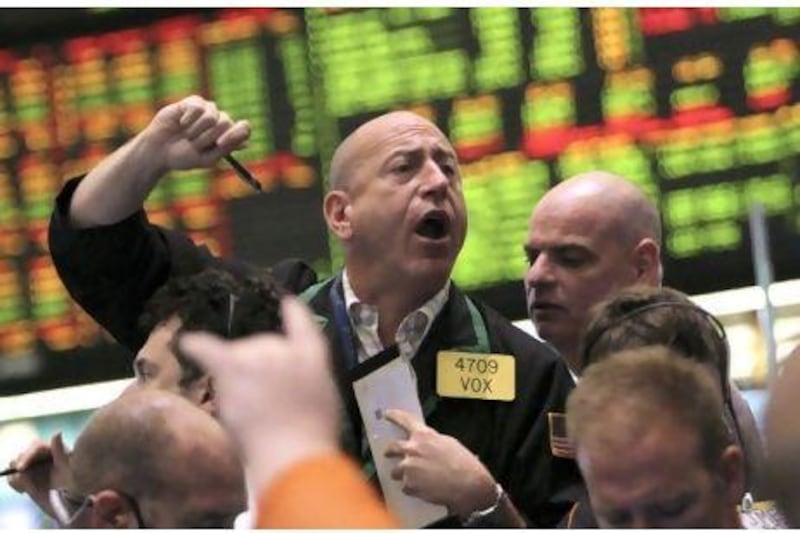A slowdown in the Asian industrial boom could pull the rug from under oil prices.
Financial Fallout: Read The National's coverage of the global economic chaos
World view bleak but picture looks brighter in the Middle East Declines in markets are raising the likelihood of another global slowdown. If the world does lurch back into recession, economists say the MIddle East is in a better position to weather the economic storm. read article
Local tourism and retail at some risk Consumer spending is expected to remain buoyant across the Middle East should there be another economic slowdown across the world. Read article
UAE banks proactive on mortgages UAE lenders are starting to aggressively target homebuyers for the first time since US mortgage defaults sparked the 2008 global meltdown. read article
Small businesses can take shelter With the threat of a second global downturn looming large, both small businesses and investors have a lot to lose. read article
Threat to US and EU but Gulf set fair Financially, the region is in a better position to weather storms. read article
Producers and consumers alike have lowered their forecasts for oil demand growth not only in western economies but also in the East. That threatens to send crude prices below the US$100 mark - the price floor for most of this year - analysts warn.
"While Asian demand will be significantly stronger than in other parts of the world, we do not believe this will be sufficient to avoid declines," says Ross Strachan, the commodities economist at Capital Economics in London.
There is bleaker demand outlook for next year, according to recent reports by Opec and the International Energy Association, the organisation based in Paris that represents 28 major consuming nations.
Some fear oil prices could to sink as far as during the 2008 downturn, when Brent, the European benchmark, dipped to $36 a barrel from a high of $147.
"The prices could very easily go into free fall," says Jason Schenker, the president of Prestige Economics in Texas. "A lot of oil producers are going to feel a lot of pain."
In 2008 declines prompted Opec to pull back 4.2 million barrels of oil from the market in three production ceiling cuts, altogether decreasing its output by 12 per cent.
At the time the organisation's 12 members, including Saudi Arabia and the UAE, were driven by the threat of falling oil revenues.
The organisation would act again if the price of Brent falls to $80 a barrel from current levels of about $105, Barclays Capital predicts.
The UAE needs the oil price to stay above $84 a barrel to break even on its annual budget, according to the Institute of International Finance.
But it remains to be seen whether Opec can coordinate any action following the acrimony at this year's meeting in June, when members failed to come to a consensus on where to set the supply ceiling.
The wild card is if the US opts for another around of quantitative easing, in which the Federal Reserve buys large amounts of debt.
That would send oil prices up, and a high price has the potential to wipe demand from the market, said Ehsan Ul Haq, the senior market analyst at KBC Energy Economics.
"If they decide to release more money into the market it will result in higher commodity prices. Prices of around $120 per barrel result in demand destruction," he says.





